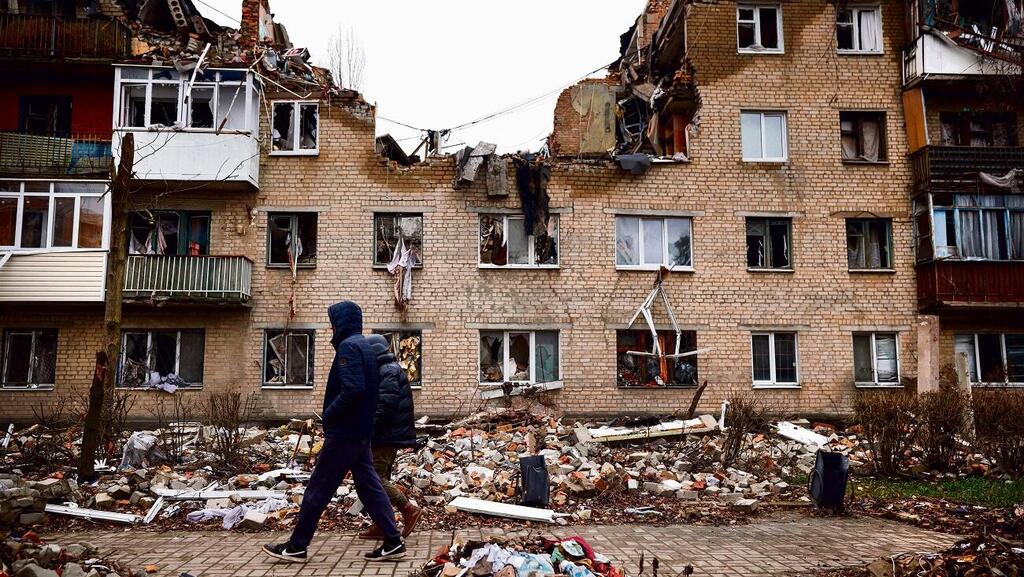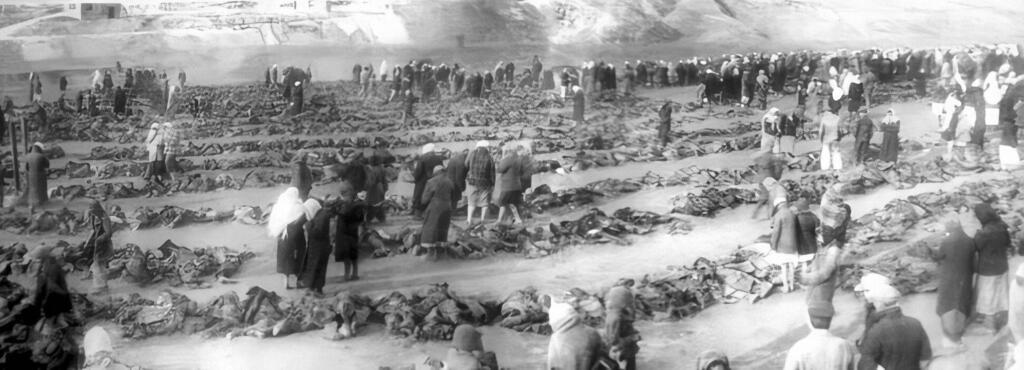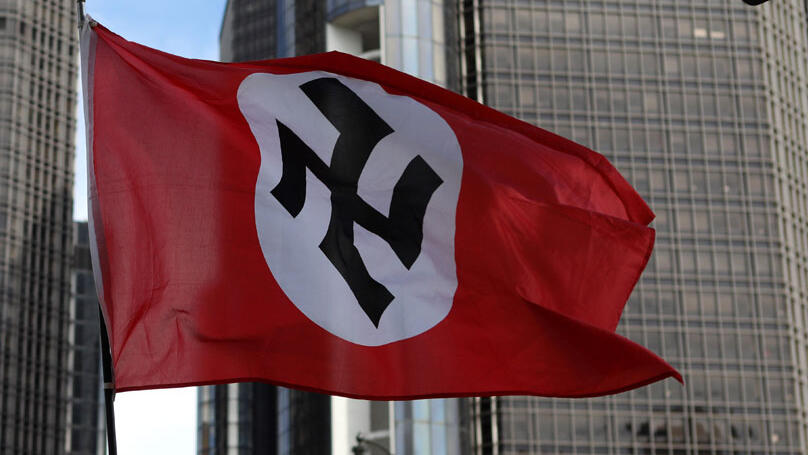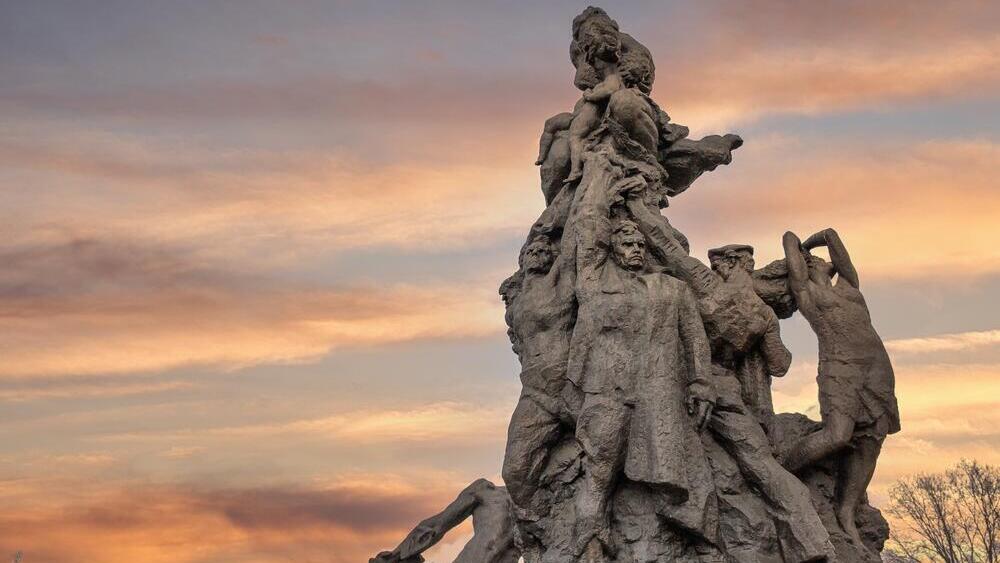While Bakhmut has gained international attention in recent months as it became the scene of some of the fiercest fighting of the Russia-Ukraine war, few know that this small city in Eastern Ukraine was also the site of a horrific massacre where the Nazis slaughtered thousands of Jews during World War II.
Stories that may interest you:
Do we need war between Russia and Ukraine in order to remember that the atrocities of the Holocaust also took place on Soviet soil?
Bakhmut was founded in the 16th century, and in 1924, Soviet authorities changed its name to Artemovsk, after a local Communist Party activist.
During World War II, about 5,300 Jews lived in the city. Soviet forces withdrew from it on November 1, 1941, and soon after, the Germans rolled in and seized the city, reinstating its old name - Bakhmut. The Jews were forced to wear white armbands as a form of identification, and many of them were sent to forced labor.
On January 7, 1942, the Nazis gathered the Jews in the town center. They were told to bring food for eight days, but all their belongings were taken from them upon arrival. After handing over the keys to their apartments, they were taken to a large cellar, and for three days, they were crowded and suffered terrible conditions, without any food and water.
The cries and pleas of trapped children alerted the townspeople, but anyone who attempted to provide help to those inside was immediately beaten by Nazi officers.
Meanwhile, the Germans prepared to carry out the killing. In Bakhmut, there was no need to dig killing pits, seeing as the local alabaster mines were fit as a place to store the bodies.
On the night of January 10-11, Jews were transported by trucks from the cellar to the entrance of the mine and lined up in a long queue. Inside a cave numbered 64, they were shot dead one after the other.
Meanwhile, gas vans were also used to murder several hundred more Jews. Their bodies were piled together with the others in the cave. After the killing was completed, the Nazis sealed the entrance to the mine, leaving some Jews injured and dying inside. Testimonies reported screams coming from the mines for days after the incident.
In September 1943, Bakhmut was liberated, and the locals began searching for the Jews who had disappeared. They soon discovered a wall blocking the entrance to the mine, broke it down, and uncovered thousands of well-preserved bodies behind it.
4 View gallery


A building in Bakhmut decimated in fighting between Russian and Ukrainian forces
(Photo: Ziv Koren)
The bodies lay next to each other, holding onto their last possessions, their faces frozen in terror. This is how the Veksman family was found. Shia and Basya lay next to the cave wall, with their two children, Masha and Misha at their feet.
Nazi collaborators were forced to remove the bodies and arrange them in rows so that the residents of the town could identify their former neighbors. Later, the bodies were buried in a mass grave, and only 1,960 of them ultimately received a proper burial.
To this day, it's unclear how many Jews were exactly murdered in Bakhmut's cave, but estimates stand at about 3,000. Only about half of the victims' names have been recovered.
Like many of the horrors of the Holocaust in the USSR, Bakhmut's story remains a footnote in our history, mostly known only in academic circles. The cave in which Jews were murdered became the wine cellar of a famous winemaker, and only in 1999 was a memorial erected on the site in memory of the victims, named "The Wall of Tears" or the "Babi Yar of Bakhmut," after the famous mass killing of Jews in a ravine near Kyiv.
Today, we can only wonder what happened to the memorial when the city once again became a heap of ruins during the Russian invasion. But a more important question is why do we need another war to remember the Holocaust which took place on Soviet soil? How did 2.7 million victims end up on the sidelines of our historical narrative?
Apparently, there are several reasons for this: Israel's disconnect with the Soviet Union and its locked archives until the fall of the Berlin Wall affected how much research on the subject could be carried out.
Furthermore, the Soviets themselves didn't like to highlight the Holocaust in any capacity. To this, we must add the youth trips to extermination camps in Poland and the impact of industrialized murder that took place there.
One can understand how today Israelis think that the Holocaust mainly occurred between Auschwitz and Warsaw. But since then, much more documentation and films were collected and released on the subject.
Today, we must pay special attention and tell the silenced Holocaust story of Jews in the Soviet Union.




